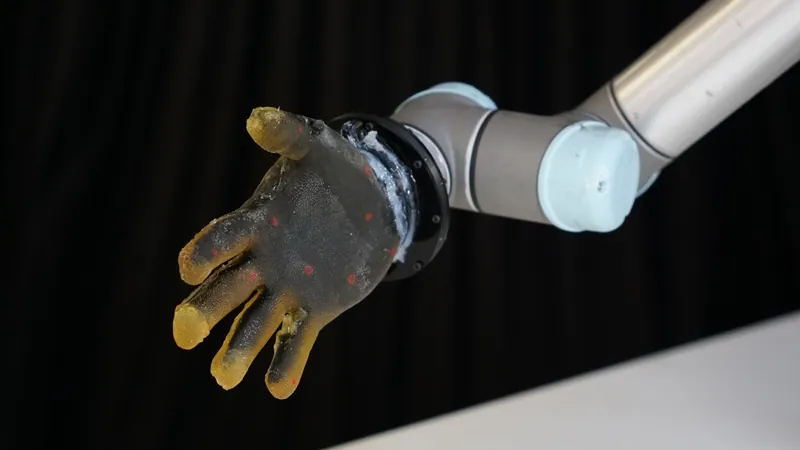
Revolutionary Robotic Skin Lets Robots 'Feel' Like Never Before!
2025-07-07
Author: Nur
Groundbreaking Electronic Skin Development
Imagine robots that can actually feel! Scientists have unveiled a groundbreaking electronic "skin" capable of detecting a wide range of tactile sensations—from gentle touches to the painful prick of a stab. This innovation could redefine the interaction between humans and machines.
The Science Behind the Sensation
Crafted from a unique gelatin-based material that conducts electricity, this synthetic skin can be molded into various shapes. By integrating a special type of electrode, it detects signals from an astonishing array of over 860,000 conductive pathways, each responsive to different touch and pressure stimuli.
Applications That Could Change the World
The potential applications are vast! This innovative skin isn't just aimed at enhancing humanoid robots; it could also revolutionize prosthetics, automotive technologies, and even aid disaster relief efforts. The findings were published recently in *Science Robotics*, marking a significant step in robotics.
A Tactile Revolution in Robotics
Experts are calling tactile sensing the next frontier in robotics, pushing engineers to develop machines with a sensitivity that rivals human touch. Traditional electronic skins have limitations, requiring multiple sensors for different sensations, which can interfere with one another. This new material simplifies the process, focusing on a single, multi-modal sensor that detects touch, temperature, and even damage.
Testing the Limits of Synthetic Flesh
To truly test this synthetic flesh, researchers engaged in a vigorous series of experiments—more like a survival test! They subjected the material to extreme conditions, blasting it with heat, poking it with fingers and robotic arms, and even cutting it with scalpels. The result? They collected over 1.7 million data points, honing in on how different sensations could be recognized.
A Step Closer to Human-Like Sensation
While the electronic skin isn't yet the equal of human skin, co-author Thomas George Thuruthel from University College London believes it surpasses all existing technologies. "Our approach is not only flexible but also cost-effective, paving the way for robots to be calibrated with human touch for various tasks," he stated.
A Brave New Era for Robotics
This incredible advancement holds the promise of making robots more aware and responsive, bridging the gap between humans and machines. As scientists continue to refine this technology, the day may not be far off when robots can truly feel their way through the world!





 Brasil (PT)
Brasil (PT)
 Canada (EN)
Canada (EN)
 Chile (ES)
Chile (ES)
 Česko (CS)
Česko (CS)
 대한민국 (KO)
대한민국 (KO)
 España (ES)
España (ES)
 France (FR)
France (FR)
 Hong Kong (EN)
Hong Kong (EN)
 Italia (IT)
Italia (IT)
 日本 (JA)
日本 (JA)
 Magyarország (HU)
Magyarország (HU)
 Norge (NO)
Norge (NO)
 Polska (PL)
Polska (PL)
 Schweiz (DE)
Schweiz (DE)
 Singapore (EN)
Singapore (EN)
 Sverige (SV)
Sverige (SV)
 Suomi (FI)
Suomi (FI)
 Türkiye (TR)
Türkiye (TR)
 الإمارات العربية المتحدة (AR)
الإمارات العربية المتحدة (AR)